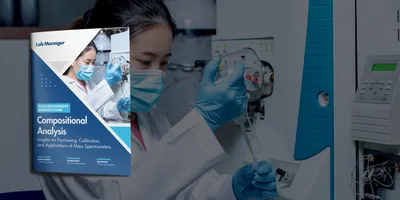The emergence of new psychoactive substances (NPS) provides challenges for most forensic toxicology labs. Drug designers use the chemical structure of existing substances and modify one or more functional sites, leaving the rest of the structure intact. This generates a variety of molecules that produce the desired results but circumvent existing drug laws, which are based on the chemical structures of banned substances. NPS drug designers can synthesize and commercialize new substances much faster than forensic labs can develop and validate new analytical test methods to identify and quantitate them in seized samples. In addition, with globalization and widespread access to the internet, the online marketing of these substances contributes to their distribution, causing negative public health issues, such as adverse reactions, overdoses, and deaths. As of December 2021, the United Nations Office on Drugs and Crime (UNODC) reports 1,124 NPS have been documented in 134 countries and territories. The two largest classes of NPS are stimulants and synthetic cannabinoid receptor agonists, which account for almost two-thirds of the new substances reported.
Since NPS are specifically designed to evade legal control based on chemical structure, the UNODC has established the early warning advisory (EWA) on NPS, which shares information on distribution, harm, and drug identification. It also provides law enforcement and forensic labs support on quality assurance, manuals and guidelines, training, and field detection through its lab in Vienna, Austria.
These efforts are helping nations apply the principal of chemical similarity to existing controlled substances to help control NPS. Several countries have applied this concept to address large numbers of NPS.
Analytical challenges for monitoring NPS
NPS development is dynamic and occurs quickly. It is relatively easy for NPS drug designers to evade the existing testing methods and databases of banned substances. The process of understanding the toxicological impacts of new NPS, and then detecting, identifying, and quantifying them is expensive, time-consuming, and complex. Despite these challenges, it is essential to learn the health risks associated with consuming these substances, and to find robust methods to detect these substances. Once understood, it is important to share the methods and the results and incorporate the information in the databases available to forensic labs across the country.
It is relatively easy for NPS drug designers to evade the existing testing methods and databases of banned substances.
Analyzing NPS compounds requires methods with sufficient separation, specificity, and sensitivity to be certain of the results. Separation is required to highlight the active agents in a complex matrix, such as blood, urine, or a seized formulated NPS. Specificity is required to identify adulterated functional groups of chemical structures and distinguish between known drugs, NPS, and other similar structures. Highly sensitive methods are required to detect these substances, which can be effective at very low concentrations. One of the challenges of these analyses is that drug designers are synthesizing new substances, which means that forensic scientists must deformulate these NPS from the analytical data, and that they cannot rely on published reports to complete the analyses.
Fortunately, innovation in analytical methods and instruments has produced tools and protocols that meet the requirements of forensic labs to characterize the latest NPS products. The most important tools for these analyses are hyphenated chromatography–mass spectrometry instruments, especially those with high performance mass spectrometers.
Gas chromatography with mass spectrometry (GC/MS) is one of the main techniques for researching seized NPS (tablets, powders, seals, herbs, etc.) and their metabolites in blood, urine, hair, saliva, and other samples. GC/MS is a robust lab method that is used to analyze the volatile components of the samples. A key driver to the separation is difference of boiling point of the analytes. Many different sample preparation protocols can help extract and amplify the analytes of interest from a variety of complex samples and increase method sensitivity. Some of the key sample preparation protocols include liquid-liquid extraction (LLE) or deproteination, solid phase extraction (SPE), solid phase microextraction (SPME), or liquid-liquid microextraction (DLLME).
Advanced Lab Management Certificate
The Advanced Lab Management certificate is more than training—it’s a professional advantage.
Gain critical skills and IACET-approved CEUs that make a measurable difference.
Liquid chromatography (LC), either high performance liquid chromatography (HPLC) or ultrahigh performance liquid chromatography (UHPLC) is the method of choice for nonvolatile analytes contained in NPS formulations or samples. LC techniques are capable of analyzing NPS and its metabolites in blood, plasma, serum, urine, hair, and saliva samples. LC techniques can also be coupled with effective sample preparation protocols, like LLE, SPE, or DLLME, to increase method sensitivity. LC is a very robust and flexible technique, and its power is often increased by combination with fluorescence and/or mass spectrometry (LC/MS) detectors to increase sensitivity and specificity.
LC techniques are capable of analyzing NPS and its metabolites in blood, plasma, serum, urine, hair, and saliva samples.
High resolution mass spectrometry (HRMS) is often combined with GC and LC experiments. HRMS combines high mass resolution to clearly identify the compound in question with high mass accuracy, which allows the determination of precise ion masses obtained from NPS and its metabolites. The exact mass of the ions enables the elucidation of the most probable chemical structures of the NPS compounds. Further analysis by fragmenting ions in the mass spectrometer is available through MS/MS techniques. These instruments add structural information to the data available to scientists to identify and catalog NPS materials. Combining the exact mass and fragment data with a chemical understanding of NPS materials allows for clear assignment of the chemical structures of the new drugs, allowing NPS formulas and their metabolites to be added to databases to enable global sharing of data on new drugs.
Most forensic labs have GC/MS, LC, and LC/MS instruments and methods available. As new methods are developed to address NPS, these tools can be used to address NPS concerns in those locations. These instruments are very reliable and can be used in both preliminary and definitive analyses.
Future outlook
The improvement of analytical screening methods such as LC/MS/MS, and definitive detection methods (GC/MS and LC-fluorescence), are fundamental to identify original NPS materials. The rapid introduction of new substances and their metabolites into available databases is essential for forensic toxicology to overcome the current challenges. These more effective tests will contribute to curbing NPS global distribution. To meet this goal, collaborations between laboratories, scientists, governments, and police forces are essential and will help find solutions to the problems generated by NPS.













